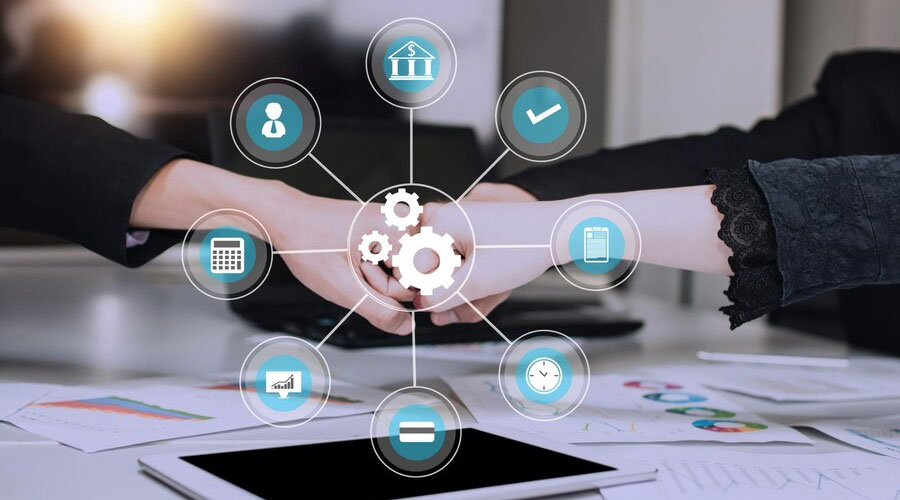Table of Contents
Introduction to Mobile Payment Systems
In today’s digital age, the way we handle financial transactions has undergone a revolutionary transformation. Mobile payment systems have emerged as a convenient and secure alternative to traditional cash and card-based transactions. With the increasing prevalence of smartphones and the growing demand for seamless payment experiences, understanding the fundamentals of mobile payment systems is becoming essential. Let’s delve into the exciting world of mobile payments and explore how they are shaping the future of commerce.
Understanding Mobile Payment Systems:
At its core, a mobile payment system allows users to make financial transactions using their smartphones or other mobile devices. These transactions can include purchases at retail stores, online shopping, bill payments, peer-to-peer transfers, and more. Mobile payment systems leverage various technologies such as Near Field Communication (NFC), Quick Response (QR) codes, and mobile apps to facilitate secure and convenient transactions.
Key Components of Mobile Payment Systems:
- Mobile Wallets: Mobile wallets serve as virtual containers that store payment card information, loyalty cards, coupons, and other credentials securely on a user’s mobile device. Popular examples of mobile wallets include Apple Pay, Google Pay, Samsung Pay, and PayPal.
- Payment Apps: Payment apps are dedicated applications developed by financial institutions, technology companies, or retailers to enable mobile payments. These apps often offer additional features such as budgeting tools, rewards programs, and transaction history tracking to enhance the user experience.
- Contactless Payments: Contactless payment methods, such as NFC and QR code payments, allow users to complete transactions by simply tapping their mobile device or scanning a code at a compatible payment terminal. This eliminates the need for physical cards or cash, offering a faster and more hygienic payment experience.
- Tokenization: Tokenization is a security feature used in mobile payment systems to protect sensitive payment information. Instead of transmitting actual card details, a unique token is generated for each transaction, reducing the risk of fraud and unauthorized access to payment data.
Benefits of Mobile Payment Systems:
- Convenience: Mobile payment systems enable users to make purchases anytime, anywhere, using their smartphones. Whether it’s buying groceries, paying bills, or splitting the dinner tab with friends, mobile payments offer unparalleled convenience.
- Security: With robust encryption technologies and tokenization, mobile payment systems prioritize security, reducing the risk of fraud and identity theft. Additionally, features such as biometric authentication add an extra layer of protection to ensure secure transactions.
- Speed: Mobile payments streamline the checkout process, allowing transactions to be completed quickly and efficiently. Contactless payments, in particular, minimize waiting times at checkout counters, making shopping more convenient for both customers and merchants.
- Accessibility: Mobile payment systems are inclusive by nature, allowing users from diverse backgrounds to participate in the digital economy. Whether you have a bank account or not, mobile payments provide a viable alternative to traditional banking services, promoting financial inclusion.
The Future of Mobile Payments:
As technology continues to evolve, the future of mobile payments looks promising. Advancements in biometrics, artificial intelligence, and blockchain are poised to further enhance the security, convenience, and functionality of mobile payment systems. Moreover, the rise of Internet of Things (IoT) devices and wearables is expected to expand the scope of mobile payments beyond smartphones, enabling seamless transactions in various contexts.
Overview of Apple Pay and Google Pay
In the age of digital innovation, the landscape of financial transactions has undergone a revolutionary shift. With the emergence of mobile payment solutions, traditional wallets are becoming relics of the past. Two major players in this realm are Apple Pay and Google Pay, both offering seamless and secure ways to make payments using your smartphone. Let’s delve into a comparative overview of these digital payment platforms, exploring their features, security measures, and user experiences.
Apple Pay: Seamlessness Redefined
Apple Pay, introduced by tech giant Apple Inc., redefines the simplicity of making payments. Integrated seamlessly into the Apple ecosystem, it allows users to make purchases both online and in physical stores with just a tap of their iPhone, Apple Watch, iPad, or Mac.
Key Features:
- Touch ID/Face ID Authentication: Apple Pay employs biometric authentication, ensuring secure transactions by requiring either Touch ID or Face ID confirmation.
- Tokenization: Each transaction is authorized with a one-time unique token, enhancing security by keeping sensitive card information private.
- Wallet Integration: Apple Wallet serves as a hub for cards, tickets, and passes, offering users a centralized location for managing their digital assets.
- Apple Cash: Users can send and receive money through iMessage using Apple Cash, making peer-to-peer transactions effortless.
Google Pay: Versatility and Accessibility
Google Pay, developed by Google, offers a versatile platform for digital payments across various devices and operating systems. It integrates seamlessly with Android devices and provides a user-friendly interface for effortless transactions.
Key Features:
- Tap and Pay: Similar to Apple Pay, Google Pay enables contactless payments in stores with NFC-enabled Android devices.
- Integration with Google Services: Google Pay integrates with Gmail, allowing users to send money via email attachments, enhancing its versatility.
- Cross-Platform Compatibility: Google Pay is not limited to Android devices; it’s also accessible on iOS and through web browsers, ensuring widespread usability.
- Google Pay Send: Facilitating peer-to-peer payments, Google Pay Send allows users to send money directly from their bank accounts or Google Wallet balance.
Security Measures: Safeguarding User Data
Both Apple Pay and Google Pay prioritize user security, employing robust measures to safeguard sensitive information.
- Tokenization: Both platforms utilize tokenization to protect users’ financial data by replacing card details with unique tokens for each transaction.
- Biometric Authentication: Leveraging biometric authentication methods such as fingerprint scanning and facial recognition adds an extra layer of security to authorize transactions.
- Device Encryption: Data stored on devices is encrypted, ensuring that even if a device is lost or stolen, sensitive information remains inaccessible.
- Fraud Monitoring: Continuous monitoring for suspicious activities and prompt notifications for unauthorized transactions help mitigate fraud risks.
User Experience: Simplifying Transactions
Both Apple Pay and Google Pay aim to streamline the payment process, providing users with intuitive interfaces and hassle-free experiences.
- User-Friendly Interfaces: Both platforms offer intuitive interfaces, making it easy for users to add cards, make payments, and manage transactions.
- Speed and Convenience: With the tap-to-pay feature, transactions are swift and convenient, eliminating the need to fumble for physical cards or cash.
- Integration with Loyalty Programs: Integration with loyalty programs and rewards cards enhances the user experience by automating rewards accumulation and redemption.
- Widespread Acceptance: Both Apple Pay and Google Pay are widely accepted at millions of stores globally, making them convenient options for everyday transactions.
Supported Devices and Platforms
In this digitally interconnected era, where technology seamlessly integrates into our daily lives, understanding the compatibility and accessibility of devices and platforms becomes paramount. Whether it’s for personal or professional use, ensuring that your chosen devices and platforms are supported can significantly impact your user experience and productivity. Let’s delve into this crucial aspect of the tech landscape and explore how supported devices and platforms shape our digital interactions.
Understanding Supported Devices:
Before diving into the intricacies of supported platforms, it’s essential to grasp the concept of supported devices. A supported device refers to hardware capable of running specific software or operating systems effectively. This compatibility ensures optimal performance and functionality. From smartphones and tablets to laptops and desktop computers, the range of supported devices varies widely across different software and applications.
For instance, mobile apps often specify compatible devices based on operating system versions, processing power, and screen size. Similarly, software applications tailored for desktops may require specific hardware configurations to run smoothly. Understanding the compatibility requirements of your chosen software with your devices is crucial for a seamless user experience.
Exploring Supported Platforms:
In addition to devices, supported platforms play a pivotal role in determining accessibility and functionality. A platform encompasses the underlying technology infrastructure and operating systems that support software applications. Whether it’s iOS, Android, Windows, macOS, or Linux, each platform offers a unique ecosystem with its set of features and compatibility requirements.
Furthermore, cloud-based platforms have gained prominence, offering cross-device compatibility and accessibility. Services like Google Workspace, Microsoft 365, and Dropbox provide users with the flexibility to access their data and applications seamlessly across multiple devices and platforms. This versatility enhances productivity and collaboration, irrespective of the device being used.
Factors Influencing Compatibility:
Several factors influence compatibility and support across devices and platforms:
- Operating System Versions: Software applications often require specific operating system versions to function correctly. Compatibility issues may arise if your device runs an outdated operating system incompatible with the software.
- Hardware Specifications: Processing power, memory, and storage capacity play a crucial role in determining a device’s compatibility with certain applications. High-performance software may require robust hardware configurations for optimal performance.
- Screen Size and Resolution: Mobile applications are often optimized for different screen sizes and resolutions. Ensuring compatibility with your device’s display characteristics is essential for an optimal user experience.
- Third-Party Integrations: Compatibility with third-party hardware and software integrations can expand the functionality of your devices and platforms. However, ensuring seamless integration requires compatibility testing and development efforts.
Importance of Compatibility Testing:
In the rapidly evolving landscape of technology, compatibility testing is essential to ensure seamless user experiences across diverse devices and platforms. By rigorously testing software applications on various devices and operating systems, developers can identify and address compatibility issues before deployment.
Furthermore, accessibility considerations are integral to compatibility testing, ensuring that software applications are usable by individuals with disabilities. Adhering to accessibility standards enhances inclusivity and ensures that everyone can benefit from technological advancements.
Setting Up and Adding Payment Methods
In today’s digital age, establishing an online presence is crucial for businesses to thrive. Whether you’re a budding entrepreneur or a seasoned professional, setting up and adding payment methods to your e-commerce platform is paramount. After all, facilitating seamless transactions is the cornerstone of any successful online business. In this comprehensive guide, we’ll walk you through the process, step by step.
Understanding Payment Methods
Before diving into the technicalities, let’s first understand the different types of payment methods available for e-commerce platforms:
- Credit/Debit Cards: Perhaps the most common method, allowing customers to make purchases using their credit or debit cards.
- Digital Wallets: Services like PayPal, Apple Pay, and Google Pay enable customers to make secure payments without sharing their card details directly.
- Bank Transfers: Directly transferring funds from a customer’s bank account to the merchant’s account.
- Cryptocurrency: An emerging trend, offering decentralization and security for online transactions.
Setting Up Payment Gateways
Now that we’ve outlined the types of payment methods, let’s delve into setting up payment gateways:
- Choose a Payment Gateway Provider: Research and select a reputable payment gateway provider that aligns with your business needs and caters to your target audience.
- Account Creation: Sign up for an account with the chosen provider and complete the verification process.
- Integration: Integrate the payment gateway with your e-commerce platform. Most providers offer comprehensive documentation and plugins for popular platforms like Shopify, WooCommerce, and Magento.
- Testing: Before going live, thoroughly test the payment gateway to ensure seamless functionality and compatibility with your website.
Adding Payment Methods to Your Website
With the payment gateway in place, it’s time to add various payment methods to your website:
- User-Friendly Interface: Design a user-friendly interface that prominently displays the available payment methods during the checkout process.
- Multiple Options: Offer multiple payment methods to cater to diverse customer preferences and increase conversion rates.
- Security Measures: Implement robust security measures to safeguard sensitive customer information and build trust.
- Transparent Pricing: Clearly outline any additional fees or charges associated with different payment methods to avoid any surprises for customers.
Optimizing for Success
To optimize your payment methods for maximum efficiency and success, consider the following tips:
- Mobile Optimization: Ensure that your payment methods are optimized for mobile devices, as an increasing number of customers are shopping on smartphones and tablets.
- Streamlined Checkout Process: Simplify the checkout process to minimize cart abandonment rates and enhance the overall shopping experience.
- Customer Support: Provide responsive customer support to address any payment-related queries or issues promptly.
- Regular Updates: Stay updated with the latest trends and technologies in payment processing to adapt and improve continuously.
Security Features and Encryption
In today’s digital age, where information is constantly exchanged and stored online, ensuring the security of our data has become paramount. With the rise of cyber threats, businesses and individuals alike are seeking robust security features and encryption methods to protect sensitive information from falling into the wrong hands. Let’s delve into this crucial aspect of modern technology and understand how it’s shaping the digital landscape.
Understanding Security Features:
Security features encompass a range of measures designed to safeguard data, systems, and networks from unauthorized access, breaches, or cyber attacks. These features are integral components of any robust security infrastructure and play a vital role in mitigating risks and vulnerabilities.
One of the fundamental security features is access control, which regulates who can access certain resources or areas within a system. Through mechanisms such as passwords, biometrics, and multi-factor authentication, access control ensures that only authorized users can view or modify sensitive data.
Another crucial aspect is firewalls, which act as barriers between internal networks and external threats, monitoring and filtering incoming and outgoing network traffic based on predefined security rules. Firewalls are essential for preventing unauthorized access and protecting against malware and other malicious activities.
Furthermore, intrusion detection and prevention systems (IDPS) continuously monitor networks for suspicious activity or potential security breaches. These systems analyze network traffic, identify anomalies, and take immediate action to block or mitigate threats, thereby enhancing overall security posture.
The Role of Encryption:
Encryption serves as the cornerstone of data security by transforming plain text into ciphertext, making it unintelligible to anyone without the corresponding decryption key. This ensures that even if unauthorized users gain access to encrypted data, they cannot decipher its contents without the proper credentials.
Advanced encryption algorithms, such as AES (Advanced Encryption Standard) and RSA (Rivest-Shamir-Adleman), employ complex mathematical computations to encrypt data effectively. These algorithms provide strong cryptographic protection and are widely used in various security protocols and applications.
Encryption is employed across diverse domains, including communication channels, storage devices, and cloud services, to safeguard sensitive information from interception or unauthorized access. Secure communication protocols like SSL/TLS use encryption to establish secure connections between clients and servers, ensuring the confidentiality and integrity of data transmitted over the internet.
Additionally, end-to-end encryption (E2EE) has gained prominence for its ability to secure communications by encrypting data at the source and decrypting it only at the intended destination. E2EE is widely utilized in messaging apps, email services, and collaborative platforms, offering users peace of mind knowing that their conversations and files remain private and secure.
Embracing Emerging Technologies:
As cyber threats evolve and become more sophisticated, the need for innovative security solutions becomes increasingly apparent. Emerging technologies such as blockchain and homomorphic encryption are reshaping the landscape of data security, offering novel approaches to protect sensitive information.
Blockchain technology, best known as the foundation of cryptocurrencies, provides a decentralized and tamper-resistant framework for recording transactions and maintaining data integrity. By leveraging cryptographic techniques and distributed consensus mechanisms, blockchain enhances transparency, immutability, and security across various applications, including supply chain management, digital identities, and voting systems.
Homomorphic encryption represents another groundbreaking advancement in the field of cryptography, enabling computations on encrypted data without the need for decryption. This revolutionary technique allows for secure processing of sensitive information while preserving confidentiality, opening new possibilities for privacy-preserving data analytics and collaborative research without compromising security.
Integration with Other Apps and Services
In today’s fast-paced digital landscape, the ability of applications and services to seamlessly integrate with one another is paramount. Whether you’re a business looking to streamline operations or an individual seeking efficiency in your personal tasks, integration is the key to unlocking productivity and maximizing the potential of your tools.
Understanding Integration
Integration refers to the process of connecting different software applications and services to work together harmoniously, often through APIs (Application Programming Interfaces) or specialized connectors. It allows data to flow between systems in real-time, eliminating manual tasks and reducing errors associated with manual data entry.
Benefits of Integration
- Enhanced Efficiency: Integration automates repetitive tasks, saving time and reducing the risk of human error. For businesses, this means streamlined workflows and increased productivity.
- Improved Data Accuracy: By syncing data across multiple platforms, integration ensures that information is consistent and up-to-date across all systems, leading to better decision-making.
- Seamless Collaboration: Integration facilitates collaboration by allowing teams to access and share data effortlessly, regardless of the platforms they’re using.
- Scalability: As your business grows, integrated systems can easily adapt to changing needs and scale alongside your operations.
Integration Use Cases
- CRM and Marketing Automation: Integrating customer relationship management (CRM) software with marketing automation platforms enables businesses to track leads seamlessly from initial contact to conversion, ensuring a cohesive marketing and sales strategy.
- Accounting and Payment Processing: Integrating accounting software with payment gateways streamlines invoicing and payment collection processes, reducing administrative overhead and improving cash flow management.
- Project Management and Communication: Integrating project management tools with communication platforms fosters collaboration by allowing team members to receive updates and communicate within the context of specific projects.
- E-commerce and Shipping: Integration between e-commerce platforms and shipping carriers automates order fulfillment processes, providing customers with real-time shipping updates and reducing shipping-related errors.
Best Practices for Integration
- Choose Compatible Tools: Prioritize selecting applications and services that offer robust integration capabilities and support the APIs necessary for seamless connectivity.
- Plan Ahead: Before implementing integrations, carefully map out your workflow and identify areas where integration can add value. Consider consulting with experts to ensure a smooth implementation process.
- Ensure Data Security: When integrating systems, prioritize data security to protect sensitive information. Implement encryption, access controls, and regular audits to mitigate the risk of data breaches.
- Monitor Performance: Regularly monitor the performance of integrated systems to identify any issues or bottlenecks. Implement analytics tools to track key metrics and optimize integration processes over time.
Loyalty Programs and Rewards Integration
In the dynamic landscape of business, one of the most significant challenges faced by companies is retaining customers and fostering their loyalty. In response to this challenge, loyalty programs have emerged as a powerful tool for businesses to incentivize repeat purchases and cultivate lasting relationships with their customer base. However, the effectiveness of these programs often hinges on their integration with rewards systems, ensuring seamless engagement and maximum value delivery to customers.
Loyalty programs are designed to reward customers for their repeat business, encouraging them to choose a particular brand over competitors. These programs can take various forms, including points-based systems, tiered memberships, cashback incentives, and exclusive perks. While the structure of loyalty programs may vary, their ultimate goal remains consistent: to enhance customer retention and drive long-term profitability.
The integration of rewards into loyalty programs is paramount to their success. Seamless integration ensures that customers can easily earn and redeem rewards across various touchpoints, whether online, in-store, or through mobile applications. By streamlining the rewards process, businesses can enhance the overall customer experience, making it more convenient and appealing for individuals to participate in the program.
One key aspect of effective rewards integration is personalization. By leveraging data analytics and customer insights, businesses can tailor rewards to align with the preferences and behaviors of individual customers. Personalized rewards not only increase engagement but also foster a sense of appreciation and value among customers, strengthening their loyalty to the brand.
Moreover, integrating rewards into loyalty programs enables businesses to collect valuable data on customer behavior and preferences. This data can be utilized to refine marketing strategies, improve product offerings, and enhance the overall customer experience. By gaining a deeper understanding of their customers, businesses can create targeted campaigns and promotions that resonate with their audience, driving higher levels of engagement and loyalty.
Furthermore, integrating rewards across multiple channels allows businesses to create a cohesive and omnichannel experience for customers. Whether a customer is shopping online, in-store, or via a mobile app, they should have access to the same rewards and benefits. This consistency not only enhances convenience for customers but also reinforces brand loyalty by providing a seamless experience across all touchpoints.
In today’s competitive marketplace, the integration of rewards into loyalty programs is no longer a luxury but a necessity for businesses looking to stay ahead. By leveraging data-driven insights, personalization, and omnichannel integration, companies can create compelling loyalty programs that drive customer engagement, retention, and ultimately, long-term profitability.
Global Availability and Market Penetration
In today’s interconnected world, global availability and market penetration have become the holy grail for businesses aiming to expand their footprint and maximize revenue streams. The concept revolves around making products or services accessible to consumers worldwide while effectively capturing market share in diverse regions. In this article, we delve into the intricacies of global availability and explore strategies for successful market penetration.
Understanding Global Availability:
Global availability refers to the ability of a product or service to be accessible to consumers across different geographical locations. With advancements in technology and logistics, barriers to entry into foreign markets have significantly diminished. This has paved the way for businesses of all sizes to tap into international markets and reach a broader customer base.
Importance of Market Penetration:
Market penetration is crucial for businesses seeking sustainable growth. It involves capturing a significant share of the target market by either expanding the customer base or increasing the usage of products or services among existing customers. Effective market penetration strategies can drive revenue growth, enhance brand visibility, and establish a competitive edge in the global marketplace.
Strategies for Global Market Penetration:
- Market Research and Localization: Conduct thorough market research to understand the unique preferences, cultural nuances, and regulatory requirements of each target market. Tailor products or services to meet local needs and preferences through localization efforts such as language translation, cultural adaptation, and customization.
- Omni-channel Distribution: Embrace a multi-channel distribution strategy to reach customers through various touchpoints, including e-commerce platforms, brick-and-mortar stores, distributors, and strategic partnerships. Providing multiple avenues for purchase enhances accessibility and convenience for customers, driving higher sales volumes.
- Digital Marketing and SEO Optimization: Leverage digital marketing channels such as search engine optimization (SEO), social media marketing, and content marketing to increase brand visibility and attract organic traffic. Optimizing online content for relevant keywords and local search trends improves search engine rankings, driving qualified leads and conversions.
- Partnership and Alliances: Forge strategic partnerships and alliances with local businesses, distributors, or influencers to leverage their existing networks and customer base. Collaborative efforts can facilitate market entry, build trust with consumers, and accelerate growth in new territories.
- Customer-centric Approach: Prioritize customer satisfaction and engagement by offering personalized experiences, prompt customer support, and after-sales services. Building strong relationships with customers fosters loyalty and encourages repeat purchases, ultimately driving long-term profitability and market expansion.
- Agile Adaptation: Remain agile and adaptable to evolving market dynamics, consumer trends, and competitive landscapes. Continuously monitor market performance, gather feedback from customers, and iterate on strategies to stay ahead of the curve and maintain relevance in diverse markets.
Future Trends and Developments
In the ever-evolving landscape of human civilization, the quest to decipher the future is a perennial fascination. What innovations will shape our lives? What trends will redefine industries? How will technology continue to revolutionize the way we live, work, and interact? Let’s embark on a journey to unravel the mysteries of tomorrow, exploring the potential trends and developments that await us on the horizon.
- Artificial Intelligence (AI) and Machine Learning (ML) Domination: As we venture further into the 21st century, the dominance of artificial intelligence and machine learning is set to intensify. These technologies are poised to permeate every aspect of our lives, from personalized healthcare and autonomous vehicles to predictive analytics and smart cities. The convergence of AI and ML will unlock unprecedented efficiencies, enhance decision-making capabilities, and drive innovation across diverse sectors.
- Rise of Augmented Reality (AR) and Virtual Reality (VR): Augmented reality and virtual reality are no longer confined to the realms of gaming and entertainment. In the coming years, these immersive technologies will revolutionize industries such as education, retail, healthcare, and beyond. From virtual classrooms and interactive shopping experiences to virtual medical simulations and remote collaboration tools, AR and VR will redefine how we perceive and interact with the world around us.
- Sustainability and Environmental Consciousness: With mounting concerns over climate change and environmental degradation, sustainability will emerge as a central theme in future developments. From renewable energy and circular economies to eco-friendly products and green infrastructure, businesses and governments will prioritize sustainable practices to mitigate their ecological footprint. Innovations in clean energy, waste management, and conservation efforts will pave the way for a more sustainable and resilient future.
- The Era of Quantum Computing: Quantum computing promises to unlock unprecedented computational power, enabling breakthroughs in fields such as cryptography, drug discovery, and optimization problems. As researchers make strides in quantum hardware and algorithms, we can expect quantum supremacy to become a reality, ushering in a new era of computing capabilities beyond the limitations of classical computers.
- Biotechnology and Healthcare Revolution: Advances in biotechnology, genomics, and personalized medicine will revolutionize healthcare delivery and disease management. From gene editing and regenerative medicine to telemedicine and health wearables, the future of healthcare will be characterized by precision, accessibility, and patient-centricity. Innovations in biotech will not only extend human lifespan but also enhance the quality of life for individuals worldwide.
- The Emergence of 5G and Beyond: The rollout of 5G networks will unlock unprecedented connectivity and pave the way for the Internet of Things (IoT), autonomous vehicles, and smart infrastructure. As we harness the power of ultra-fast, low-latency communication, industries will undergo a digital transformation, enabling seamless connectivity and real-time data exchange on a global scale. Beyond 5G, the development of 6G and beyond will further redefine the possibilities of wireless communication and networking.
- Space Exploration and Colonization: The race for space exploration and colonization will intensify as private companies and governments invest in ambitious missions to explore the cosmos. From lunar settlements and Mars colonies to asteroid mining and interstellar travel, humanity’s reach beyond Earth’s boundaries will expand, unlocking new frontiers for scientific discovery, resource exploration, and the expansion of civilization beyond our home planet.
Choosing the Right Mobile Payment Solution
In today’s fast-paced digital era, embracing mobile payment solutions has become imperative for businesses aiming to stay ahead in the competitive market. With an array of options available, selecting the right mobile payment solution tailored to your business needs can be a daunting task. However, with careful consideration and analysis, you can find the perfect fit that aligns with your objectives and enhances customer experience. Here’s a comprehensive guide to help you navigate through the process of choosing the ideal mobile payment solution.
- Understand Your Business Requirements: Before diving into the plethora of options available, take a step back to assess your business requirements. Determine factors such as the nature of your business, target audience, transaction volume, and integration capabilities with existing systems. Understanding these aspects will streamline the selection process and ensure that the chosen solution meets your specific needs.
- Security and Compliance: Security is paramount when it comes to handling sensitive financial data. Ensure that the mobile payment solution adheres to the highest security standards and complies with industry regulations such as PCI DSS (Payment Card Industry Data Security Standard). Look for features like tokenization, encryption, and fraud detection mechanisms to safeguard customer information and prevent unauthorized access.
- User Experience: A seamless and intuitive user experience is essential for driving customer satisfaction and loyalty. Opt for a mobile payment solution that offers a user-friendly interface and supports various payment methods, including credit/debit cards, mobile wallets, and NFC (Near Field Communication) payments. The checkout process should be smooth and hassle-free, minimizing friction and abandonment rates.
- Integration and Compatibility: Assess the compatibility of the mobile payment solution with your existing infrastructure, including POS (Point of Sale) systems, e-commerce platforms, and accounting software. Seamless integration facilitates efficient payment processing and simplifies reconciliation processes. Additionally, consider the scalability of the solution to accommodate future business expansion and technological advancements.
- Cost and Pricing Structure: Evaluate the cost implications associated with implementing the mobile payment solution. Consider factors such as setup fees, transaction fees, monthly subscriptions, and additional charges for value-added services. Compare pricing structures offered by different providers and choose a solution that offers transparent pricing with no hidden costs.
- Customer Support and Reliability: Reliable customer support is crucial for resolving any issues or queries promptly. Choose a mobile payment solution provider that offers round-the-clock customer support through multiple channels such as phone, email, and live chat. Additionally, assess the reliability and uptime of the payment gateway to ensure uninterrupted service availability.
- Analytics and Reporting: Insights derived from transaction data are invaluable for making informed business decisions and optimizing performance. Look for a mobile payment solution that provides robust analytics and reporting tools, allowing you to track sales trends, monitor transaction volumes, and identify areas for improvement. Customizable reporting dashboards enable you to gain actionable insights tailored to your business objectives.
- Future Trends and Innovations: Stay abreast of emerging trends and innovations in the mobile payment landscape to future-proof your business. Consider features such as biometric authentication, voice-enabled payments, and integration with emerging technologies like blockchain. Choosing a forward-thinking mobile payment solution ensures that your business remains competitive and adaptable to evolving consumer preferences.















